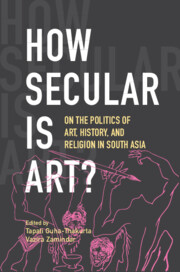1 - Introduction
Published online by Cambridge University Press: 21 February 2023
Summary
Luminescence: In Situ with Dissent
It was an extraordinary winter of protest in India, as the year 2019 rolled to its end. The background was set by a series of undemocratic bills that became acts in parliament without debate and consensus, culminating in the most explosive and divisive Citizenship Amendment Act (CAA) in December that year, leading to a surge of civil demonstrations, rallies, and protests across the country on a scale that had not been seen before. Directly triggered by the state crackdown on a student protest within the Jamia Millia Islamia University in the heart of New Delhi, made worse by arrests and vandalization of the campus, a group of Muslim women of all ages—grandmothers, mothers, daughters, and grand-daughters—came out to occupy the streets of Shaheen Bagh, a neighbourhood flanking the university. With that began a historic day and night, peaceful, immovable sit-in by the Muslim women of this locality against a conglomeration of laws that they feared threatened their citizenship, and the guarantees of secularism enshrined in the Indian Constitution (Image 1.1).
During the ensuing weeks of the defiant sit-in, artists, along with activists and students, transformed the by-lanes of the neighbourhood with murals, pavement paintings, and installations that guided visitors to the scene of protest. A month into the event, scaffoldings, ephemera, and improvisations became part of ‘the art of resistance’, transforming Shaheen Bagh into ‘an open-air art gallery’. As one student visiting the venue wrote, ‘Even before reaching Shaheen Bagh, where the women sat with their daughters and grand-daughters in silent, powerful defiance … one is introduced to Shaheen Bagh through the numerous murals. The street art guides you….’ Opening up a space for daily congregations of activists and citizens, for singing and poetry reading, for speeches and book discussions, for the setting up of a library, as well as for a profusion of murals, drawings, posters, and installations, Shaheen Bagh was both a site of contestation and experiments in democratic practice (Images 1.2 and 1.3). Particularly significant was the way art and artists became constitutive of the site of protest, alongside community elders and student activists, to together conjure visions that had to be created to be fought for.
Information
- Type
- Chapter
- Information
- How Secular Is Art?On the Politics of Art, History and Religion in South Asia, pp. 1 - 30Publisher: Cambridge University PressPrint publication year: 2024
Accessibility standard: Unknown
Why this information is here
This section outlines the accessibility features of this content - including support for screen readers, full keyboard navigation and high-contrast display options. This may not be relevant for you.Accessibility Information
- 1
- Cited by
